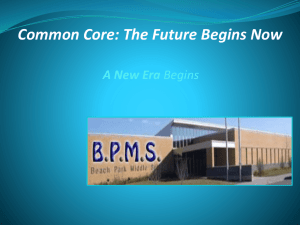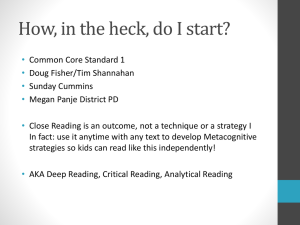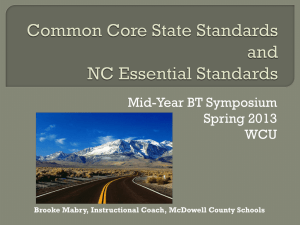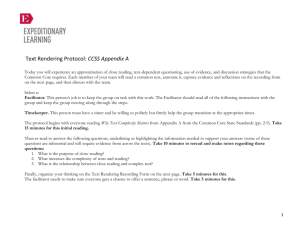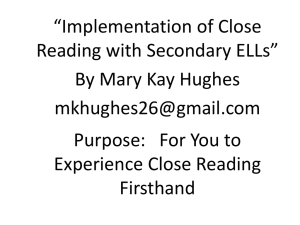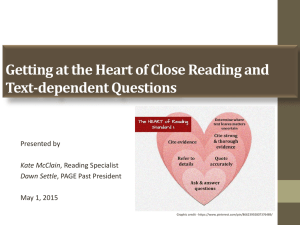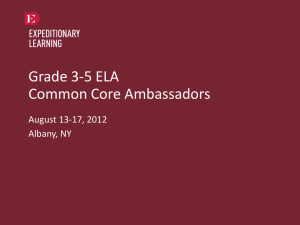Acces Point Five: Demonstrating Understanding and Assessing
advertisement
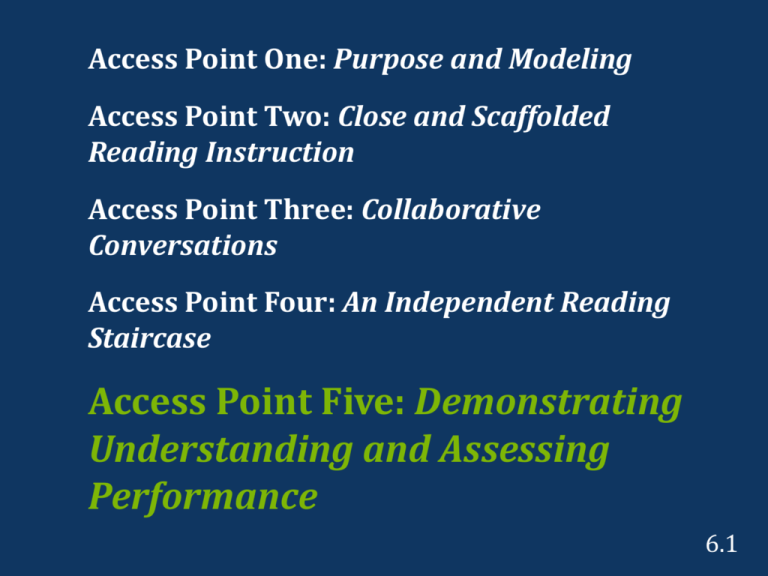
Access Point One: Purpose and Modeling Access Point Two: Close and Scaffolded Reading Instruction Access Point Three: Collaborative Conversations Access Point Four: An Independent Reading Staircase Access Point Five: Demonstrating Understanding and Assessing Performance 6.1 What’s Our Purpose for Module 6 ? How to assign effective text-dependent tasks so that student engagement with complex texts will Develop metacognitive skills Prepare them for the demands of college and their future careers Examine the influence of feedback on students accessing complex texts. Consider the value of formative assessments in cultivating our students’ ability to access complex texts. 6.2 Directions for Jigsaw Procedure for Accessing Complex Texts Requires More Than Personal Connections 1. Work in groups of four. 2. Each group chooses one of the following sections in Chapter 6: a. Model before you expect. b. Pose questions that require students to return to the text. c. Ask students to provide evidence to support their opinions and ideas. d. Require students to write rhetorically. 3. Read for 5–7 minutes. 4. Write down salient points on the graphic organizer to share with your group. 6.3 Directions for Jigsaw Activity for Text-Dependent Tasks 1. Begin in home groups of four to six. 2. Each member of the home group chooses one of the following text-dependent tasks: a. Perspective Writing b. Writing to Prompts c. Socratic Seminar d. Debates 3. Expert groups form around tasks and spend about 5–7minutes reading about the task. 4. Expert groups then take 10 minutes to do the following: i. Discuss main points ii. Discuss implications for accessing complex texts iii. Prepare a short presentation for your home groups 5. Meet in your home groups to teach each other the content of the text-dependent task you studied. 6.4 Text-Dependent Tasks Writing to Prompts Admit Slips Crystal Ball Found Poems Awards Letters Take a Stand Yesterday’s News Perspective Writing Role Audience Format Topic Socratic Seminar The Text The Questions The Leader The Participants Debates Pro/Con Phase Argument Rebuttal Evaluation 6.5 Feedback about the processing of the task (FP) Feedback about the task (FT) Feedback about the self as a person (FS) Four Types of Feedback Feedback about selfregulation (FR) Hattie, J., & Timperley, H. (2007). The Power of Feedback. Review of Educational Research, 77(1), 81–112. 6.6 Looking Closely at Feedback 1. What type(s) of feedback do you provide most often? 2. Why do you think feedback about the process and self-regulation is the most useful to students? 3. Why do you think feedback about the student as a person is limiting? 6.7 Be mindful with feedback. When effective feedback is not given, the learner is unable to clarify errors and misconceptions. If effective feedback is provided, the student is able to move forward in accessing complex texts. 6.8 Important Reminders: Feedback is primarily intended for the individual. Feed-up is a process of making instructional decisions based on patterns and trends across groups. 6.9 Why Error Analysis? To identify students who need additional instruction To document patterns that allow teachers to make instructional decisions about what to teach next, or feed-up To help identify the classes’ patterns and trends in learning 6.10 “You can’t fatten a sheep by weighing it.” —Brick, 1904 Culminating tasks and assessments are never final; we are constantly observing and assessing our students and planning accordingly for lessons. It’s the cycle of effective instruction. 6.11
